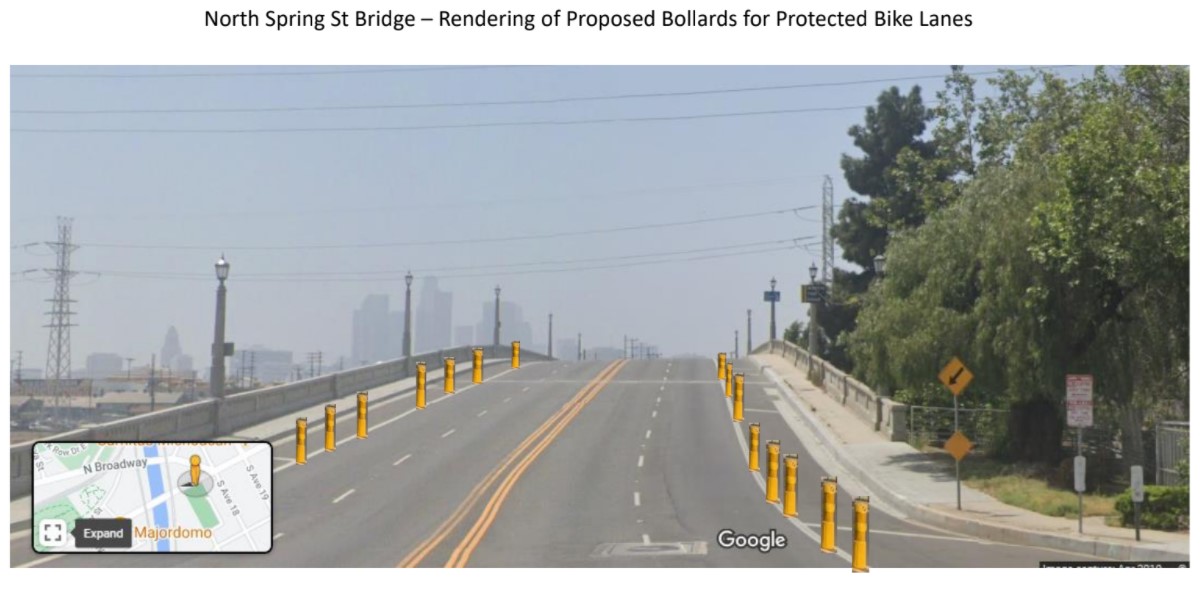
The Los Angeles City Board of Public Works Bureau of Engineering (BOE) is a few months away from completing a downtown bridge widening project that will complete important bikeway network connections. The second phase of BOE's North Spring Street Viaduct Widening and Rehabilitation project will include new bike lanes on Spring and Wilhardt Streets.

The North Spring Street Viaduct crosses the L.A. River just north of downtown Los Angeles, connecting Lincoln Heights and Chinatown. The historic bridge was built in 1927, and made earthquake safe in 1992. In 2006, BOE initiated plans to widen the bridge, proposing to tear down the historic bridge and replace it. Early BOE plans called for widening the roadway from about 43 feet to about 96 feet. Under pressure from historic preservationists, the excessive width proposal was pared down to a 68-foot wide roadway, which allowed for preserving the existing bridge and appending a new structure to it. The city council approved the less-destructive project scope in 2011.
In that 2011 approval, the environmental studies specified that the North Spring project scope include bike lanes. In 2018, however, the widened bridge reopened sans bike lanes. The BOE announced that they had been temporarily omitted due to further construction work - the tearing down of a building to create a new 4-way intersection at the former T-intersection of Spring Street and Wilhardt Street, just west of the new bridge. At the time, BOE estimated the phase II construction would take "approximately 6 months."
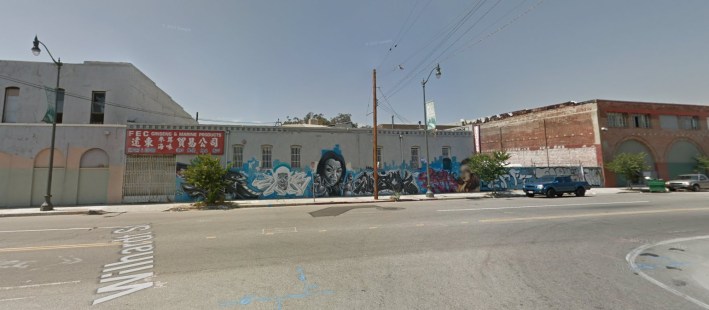
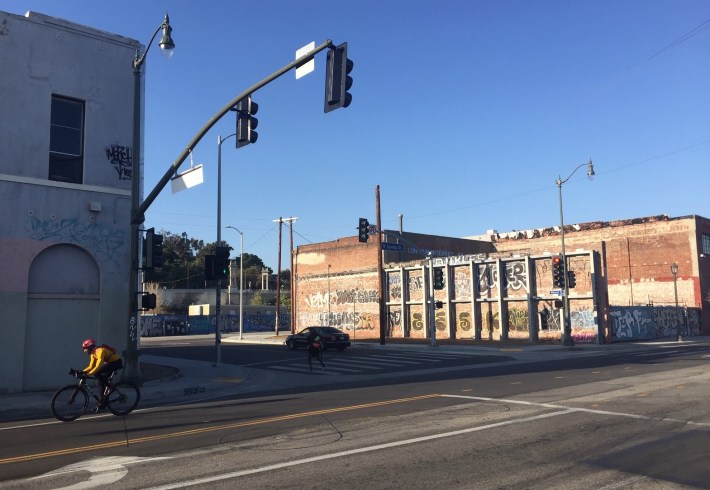
Phase II of the North Spring project includes a short (one block, ~140-foot) bikeway on Wilhardt that will connect the Spring Street bike lanes to the walk/bike path along the frontage of Los Angeles State Historic Park.
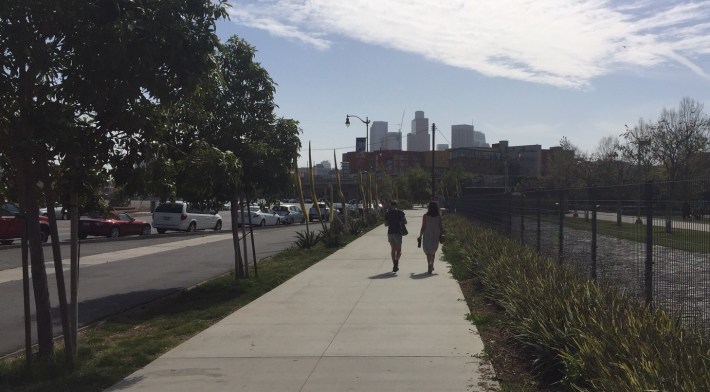
Once LADOT completes bike lanes on Avenue 19 (announced by LADOT to be completed in Fiscal Year 2019-20, after having been omitted from an earlier BOE Arroyo Seco bridge construction project), there will be a 1.8-mile bikeway connection (mostly on-street bike lanes) all the way from the Chinatown L Line Station to the L.A. River walk/bike path terminus at Avenue 19 and San Fernando Road in Cypress Park.
BOE's contractor completed the North Spring Street roadway work in late 2020. At the time, an email from BOE to Council District 1 noted that the "contractor has indicated they would like to start [bike lane] striping activities next week."
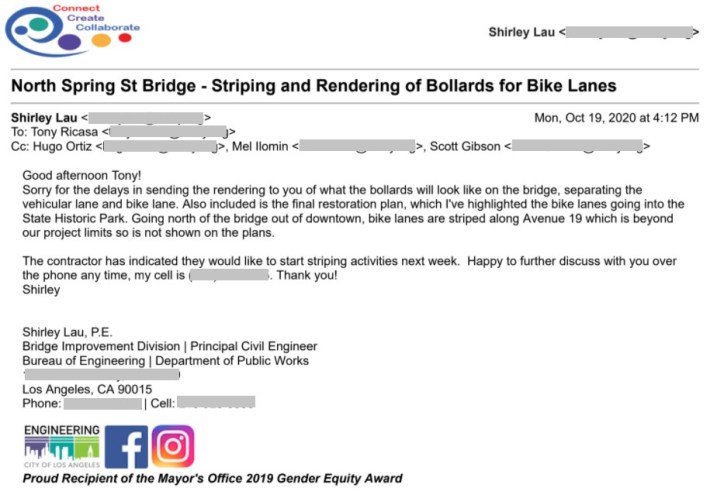
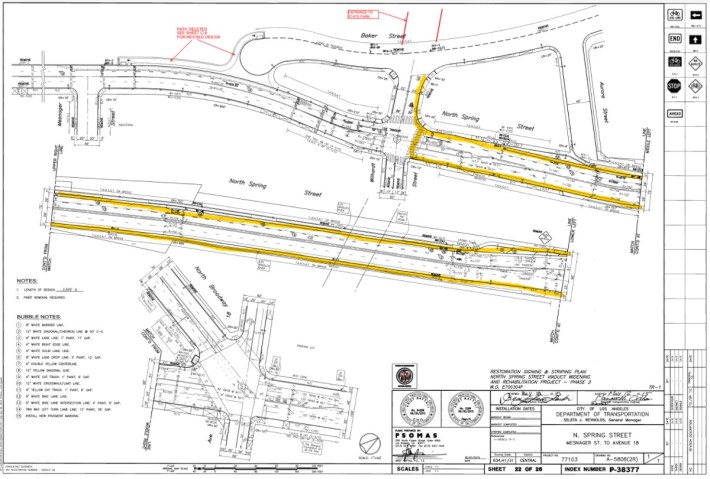
That was five months ago, and the bikeway striping has not happened yet.
In an email to Streetsblog, BOE spokesperson Mary Nemick stated that "all striping on Spring will start after North Spring Street Widening and Rehab Phase II is completed" and "phase II is scheduled to be completed soon." Per BOE's latest Project Information Report, phase II is now anticipated to be completed June 30, 2021.
Last Friday, the city Board of Public Works (BPW) approved an additional $375,000 for Phase II construction. Per testimony at the BPW meeting, in demolishing the 100+year-old brick building at 1701 N. Spring Street, the city encountered "unanticipated conditions," including contaminated underground storage tanks. On both sides, the building had shared walls which needed to be reinforced. After the demolition and planned reinforcement was thought to have been completed, the one owner of the adjacent building who had not sought reinforcement (at the southeast corner of Baker Street and Wilhardt, where reinforcement had not been planned) later demanded it. In the next couple months, BOE will be adding additional wall-reinforcements on Wilhardt at Baker.
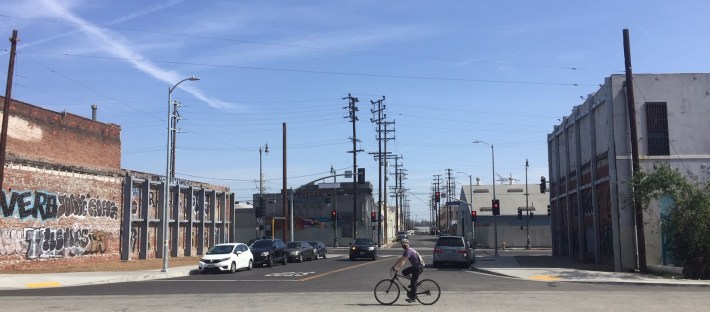
It is unclear how that shared wall construction, more than 50 feet away from Spring Street, is still holding up the delayed striping on Spring Street. (Not only is this delay impacting cyclist safety, but delays are also inconveniencing drivers - as one Spring Street car lane remains closed due to construction, despite roadway construction having been completed last year.)

Since 2018, there has been no construction on the south side of Spring, so there is still no reason for the city to hold off adding the eastbound protected lane there.
One cyclist, who requested anonymity, has begun legal proceedings to ensure that the city installs the Spring and Wilhardt bike lanes approved in the project scope. An April 8 letter, from Chatten-Brown, Carstens & Minteer to the Board of Public Works, asserts that if the city were to omit the approved bikeways from the project, it would constitute a substantial change requiring the city to re-open its environmental review process. The letter notes that the city "must construct the bike lanes as approved in the Project [final Environmental Impact Report] to comply with [the California Environmental Quality Act]."
The BOE now appears to be poised to add the Spring and Wilhardt bike lanes in the next couple months.
